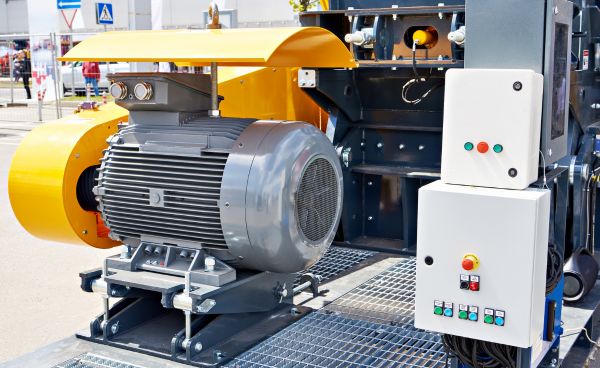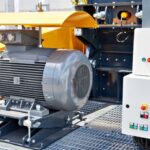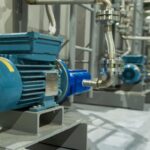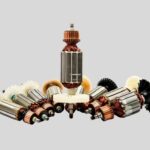How do you troubleshoot 3 phase AC motor?
The table presented below provides a comprehensive insight into the frequently encountered issues that afflict 3-phase squirrel cage induction motors. It not only outlines the root causes behind these problems but also offers effective remedies to rectify them, thereby restoring the motor’s functionality and productivity.
While this troubleshooting guide primarily focuses on 3-phase induction motors of the squirrel cage variety, its principles and solutions are equally applicable to a wide array of other three-phase induction motors.
Whether you’re dealing with issues related to motor efficiency, performance, or reliability, this resource serves as a valuable reference to help diagnose and address them effectively.
| Motor Problem | Cause | Remedy |
|---|---|---|
| Motor fails to start | Blown fuses | Replace fuse with proper type and rating |
| Overload Trips | Check and reset overload in starter | |
| Improper power supply | Check to see that power supplied agrees with nameplate specifications and load factor | |
| Improper line connections | Check connections with wiring diagram supplied with motor | |
| Open circuit in winding or control switch | This is normally indicated by a humming sound when switch is closed. Check for loose wiring connections. Confirm that all control contacts are closing. | |
| Mechanical failure | Check to see that motor and drive turns freely. Check bearings and lubrication | |
| Short circuited stator | Indicated by blown fuses. Motor must be rewound | |
| Poor stator coil connections | Remove end belts. Locate poor connections with test lamp. | |
| Rotor defective | Check for broken bars or end rings | |
| Motor may be overloaded | Reduce motor load | |
| Motor stalls | One phase may be open | Check supply lines for open phase |
| Wrong application | Change type or size. Consult motor manufacturer | |
| Overload | Reduce load | |
| Low voltage | Check that nameplate voltage is maintained. Check connection. | |
| Open circuit | Fuses blown. Check overload relay, stator and push buttons | |
| Motor runs and then dies down | Power failure | Check for loose connections to line, to fuses and to control |
| Motor does not come up to speed | Motor is applied for the wrong application | Consult manufacturer for right application of motor |
| Voltage too low at motor terminals because of line drop | Use higher voltage on transformer terminals or reduce load. Check connections. Check conductors for proper size. | |
| Starting load too high | Check load motor is supposed to carry at start. | |
| Broken rotor bars or loose rotor | Look for cracks near the rings. A new rotor may be required as repairs are usually temporary not permanent | |
| Open primary circuit | Locate fault with testing device and repair. | |
| Motor takes too long to accelerate and/or draws high current (Amps) | Excessive load | Reduce load |
| Low voltage during start up | Check for high resistance. Adequate wire size. | |
| Defective squirrel cage rotor | Replace with new rotor | |
| Applied voltage too low | Improve voltage at terminals of transformer by tap changing. | |
| Wrong rotation | Wrong sequence of phases | Reverse connections at motor or at switchboard. |
| Motor overheats while running under load | Overload | Reduce load |
| Frame or bracket vents may be clogged with dirt and prevent proper ventilation of motor. | Open vent holes and check for a continuous stream of air from the motor. | |
| Motor may have one phase open | Check to make sure that all leads are well connected. | |
| Grounded coil | Locate and repair | |
| Unbalanced terminal voltage | Check for faulty leads, connections and transformers. | |
| Motor vibrates | Motor misaligned | Realign |
| Weak support | Strengthen base | |
| Coupling out of balance | Balance coupling | |
| Driven equipment unbalanced | Re-balance driven equipment | |
| Defective bearings | Replace bearing | |
| Bearings not in line | Line bearings up properly | |
| Balancing weights shifted | Re-balance motor | |
| Poly-phase motor running single phase | Check for open circuit | |
| Excessive end play | Adjust bearing | |
| Unbalanced line current on poly-phase motors during normal operation | Unequal terminal volts | Check leads and connections |
| Single phase operation | Check for open contacts | |
| Unbalanced voltage | Correct unbalanced power supply | |
| Noisy Operation | Airgap not uniform | Check and correct bracket fits or bearing. |
| Rotor unbalance | Rebalance | |
| Hot bearings general | Bent or sprung shaft | Straighten or replace shaft |
| Excessive belt pull | Decrease belt tension | |
| Pulley too far away | Move pulley closer to motor bearing | |
| Pulley diameter too small | Use larger pulleys | |
| Misalignment | Correct by realignment of drive | |
| Hot bearings ball | Insufficient grease | Maintain proper quantity of grease in bearing |
| Deterioration of grease or lubricant contaminated | Remove old grease, wash bearings thoroughly in kerosene and replace with new grease. | |
| Excessive lubricant | Reduce quantity of grease, bearing should not be more than 1/2 filled | |
| Overloaded bearing | Check alignment, side and end thrust. | |
| Broken ball or rough races | Replace bearing, first clean housing thoroughly |
- “WHAT IS THE NEXT” for Pump Industry- Internet on things (IoT) can bring Transformation in Pumping Industry
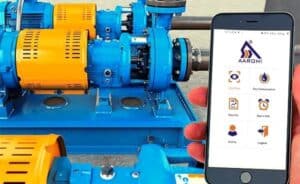 Advancements in digital technologies are changing our world. The rapid…
Advancements in digital technologies are changing our world. The rapid… - 14 causes of submersible pump and motor failure
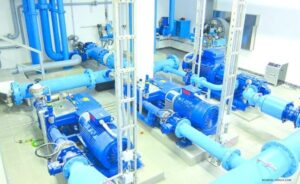 Submersible Pump and motor failure can result in extended downtimes,…
Submersible Pump and motor failure can result in extended downtimes,… - 4 Most Common Causes of A Critical Failure In Submersible Motors
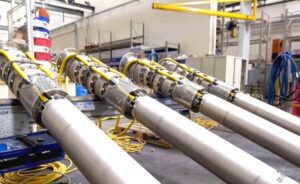 Submersible motor failures can cause problems both in terms of…
Submersible motor failures can cause problems both in terms of… - 5 Symptoms Of Failing Electric Motor Rotor
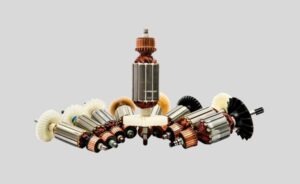 Motors are used everywhere in industrial environments and they are…
Motors are used everywhere in industrial environments and they are… - 7 Ways to Improve Electric Motor Efficiency
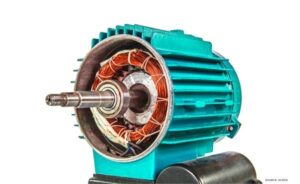 From Home appliances to industrial applications Electric Motor playing significant…
From Home appliances to industrial applications Electric Motor playing significant… - A brief understanding of leakage current testing
 What Is Leakage Current? Leakage current is the current that streams from…
What Is Leakage Current? Leakage current is the current that streams from…

